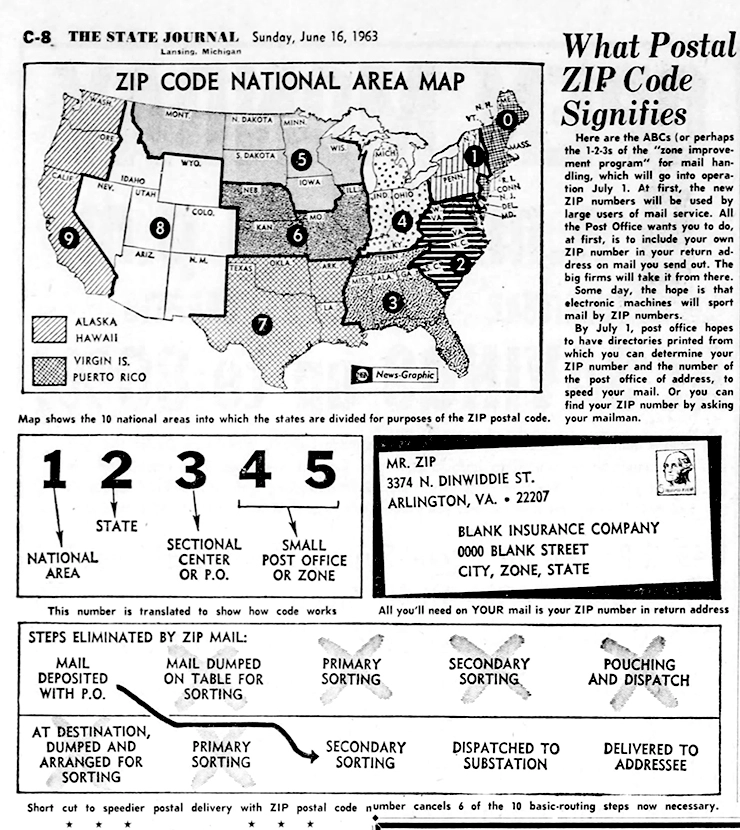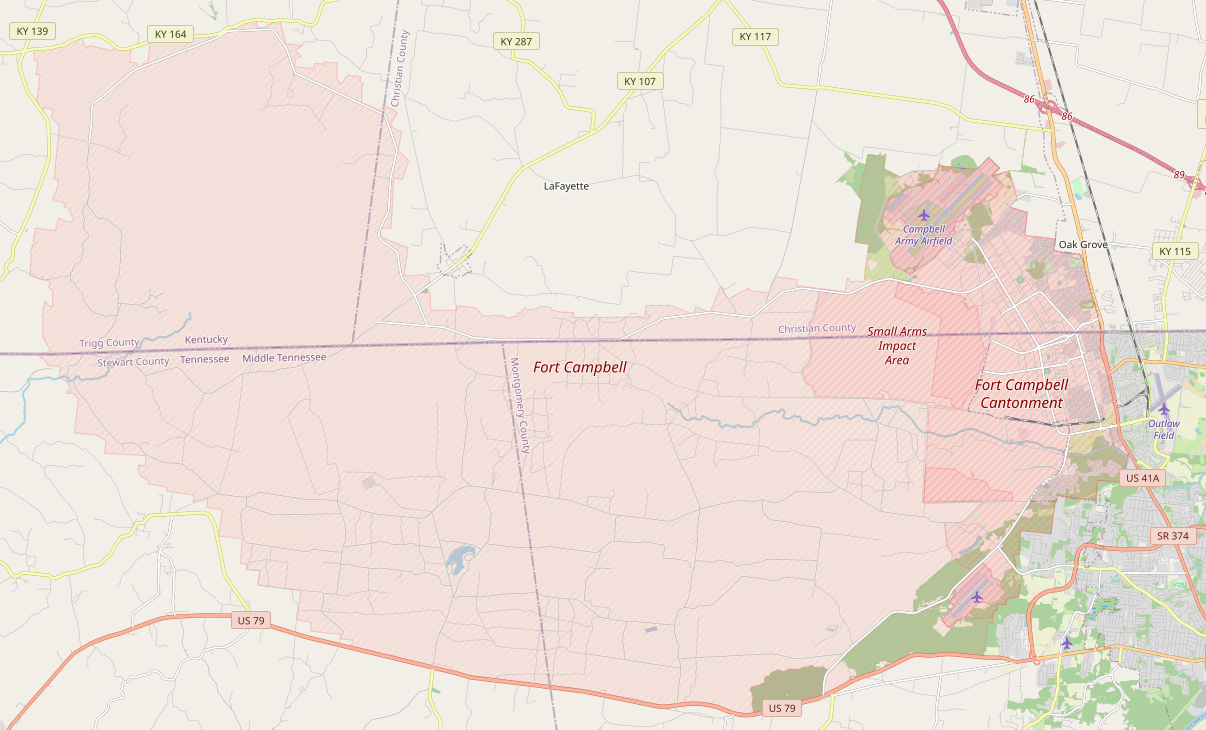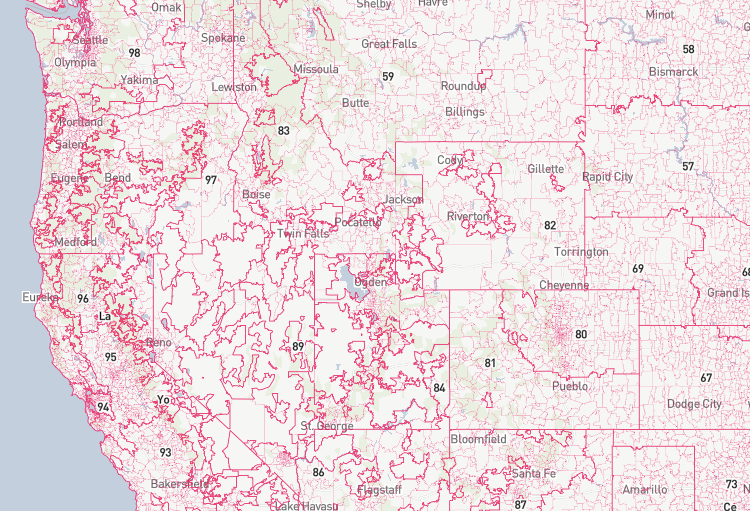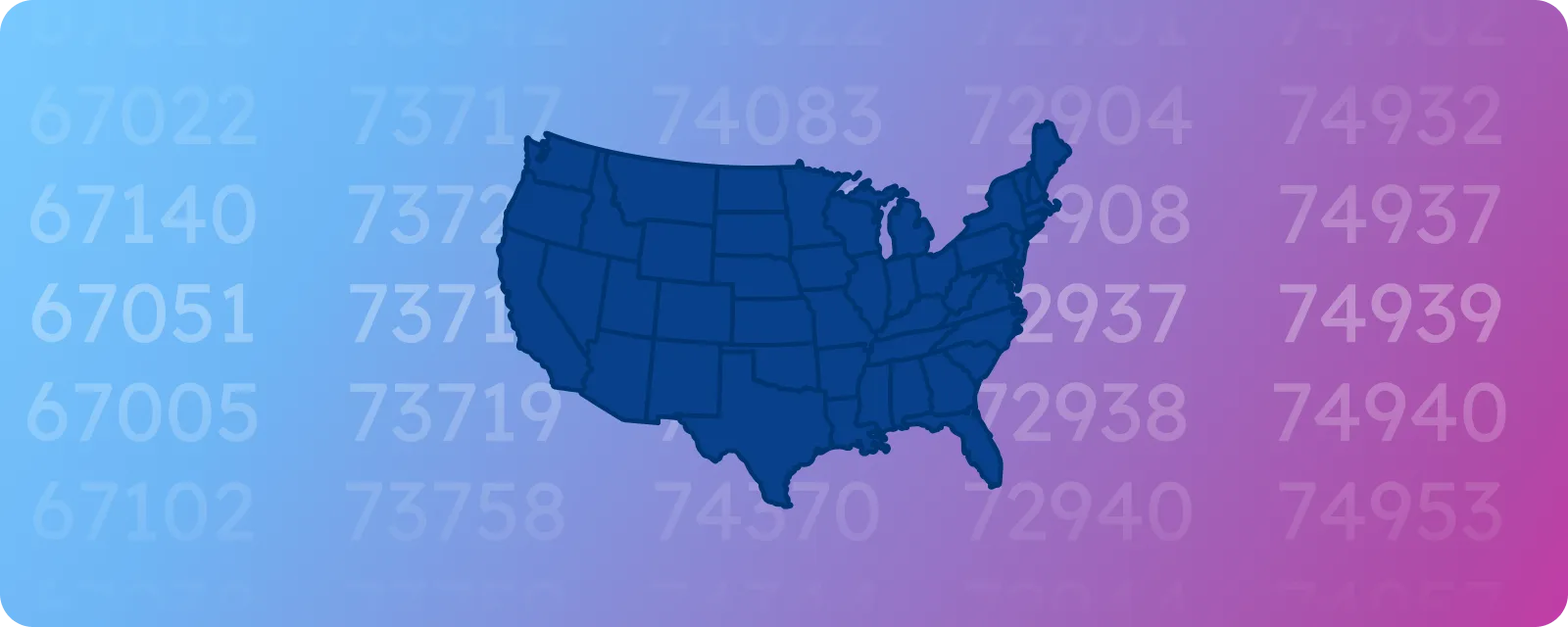Introduction
Businesses planning expansion strategies, analyzing customer demographics, or creating delivery zones often rely on ZIP codes as geographical units. However, behind these seemingly simple combinations of numbers and letters lies a complex system that doesn’t always align with political boundaries. When companies work with location data, one question is frequently asked: do ZIP codes cross state lines?
The answer might be surprising: ZIP codes don’t always follow administrative boundaries. They are designed primarily for mail delivery efficiency, not for conforming to state borders.
This misalignment between postal and administrative geography creates significant challenges and opportunities for globally operating businesses or those planning an expansion into new territories.
Understanding the true nature of ZIP code boundaries is crucial for accurate market analysis, compliance with state regulations, and efficient logistics planning. Navigating the varied postal systems worldwide makes this knowledge even more critical for globally operating businesses.
This article explores the complex relationship between ZIP codes and state boundaries, its business implications, and how high-quality data can help organizations make better-informed decisions.
💡 For over 15 years, we have created the most comprehensive worldwide ZIP code and boundary databases. Our location data is updated weekly, relying on more than 1,500 sources. Browse GeoPostcodes datasets and download a free sample here.
The Fundamental Purpose of ZIP Codes: Beyond Administrative Boundaries
ZIP codes were created with mail delivery efficiency in mind, following operational needs rather than political divisions. This section examines their origins and the inherent tension between postal logistics and geographical boundaries.
The Origin and Evolution of the ZIP Code System
The ZIP (Zone Improvement Plan) code system was introduced by the United States Postal Service in 1963 with a singular focus: improving mail delivery efficiency. The original system featured five digits, with the first three identifying a sectional center facility and the last two designating a specific post office or delivery area.
This structure reveals the system’s primary purpose: to create a logical mail sorting and delivery framework based on postal operations rather than political geography.

In 1983, the USPS expanded the system to include the additional four digits of the ZIP+4 code, allowing for even more precise mail sorting. They are sometimes down to a specific building, floor, or department. This evolution further demonstrates that ZIP codes exist to serve postal logistics, with administrative boundaries like state lines being secondary considerations at best.
The system was designed to create the most efficient mail processing routes possible, often drawing boundaries that made operational sense rather than following existing political divisions.

Postal Efficiency vs. Political Geography
The fundamental purpose of ZIP codes is to create an inherent tension between postal efficiency and political geography. Postal systems worldwide, including the USPS, are designed to optimize delivery routes and mail processing.
This optimization frequently leads to situations where a single post office serves communities straddling state boundaries. When this occurs, it makes operational sense to assign the same ZIP code to all areas served by that facility, regardless of which state they fall within.
Consider a post office located near a state border. If communities on both sides of the state line are closer to this post office than any other, postal authorities may logically assign them the same ZIP code.
The shape of the land and where people live usually determine the most efficient delivery routes. These natural patterns often don’t match up well with state boundaries, which can be drawn without considering the landscape. This reality explains why ZIP codes cross state lines: they follow operational efficiency‘s logic rather than political divisions.
Evidence and Examples: When ZIP Codes Span Multiple States
Numerous documented cases, from military installations to tribal lands, prove that ZIP codes regularly cross state lines. This section provides concrete examples and explains the geographical and logistical reasons for these boundary-crossing ZIP codes.
Documented Cases of Cross-State ZIP Codes
While the USPS doesn’t publish a comprehensive list of all cross-state ZIP codes, many documented examples confirm this phenomenon. One well-known case is ZIP code 42223, which serves the Fort Campbell military base spanning the Kentucky-Tennessee border. Despite sharing identical postal routing, residents within this single ZIP code may have addresses in either Kentucky or Tennessee.

Similarly, ZIP code 86044 crosses the Arizona-Utah border, serving both states’ remote Navajo Nation communities. ZIP code 89439 spans the California-Nevada border near Stateline, while 97635 includes portions of both Oregon and California.
Why These Cross-Border ZIP Codes Exist
Cross-state ZIP codes typically emerge from specific geographical and logistical circumstances. A single post office might logically serve both sides of the border in border communities where populations cluster around natural features like rivers or lakes that form state boundaries.
However, mountain ranges or other geographical barriers may make it impractical for communities to receive mail from a post office within their state. In contrast, a facility in the neighboring state might be more accessible.
Military installations, tribal lands, and other federal territories present exceptional cases where a unified ZIP code makes administrative sense despite spanning state lines.
In remote or sparsely populated regions, postal authorities may determine that creating separate ZIP codes for small populations across a state line would be inefficient.
Historical factors also play a role, as postal routes may have been established before current state boundaries were finalized or commonly used for administrative purposes beyond mail delivery.
Business Implications of Cross-State ZIP Codes
Cross-border ZIP codes create significant business challenges in data analysis, marketing, regulatory compliance, taxation, and territory management. This section explores how these postal anomalies impact critical business operations and decision-making processes.
Data Analysis, Marketing, and Reporting Challenges
Cross-state boundaries create significant complications for businesses conducting data analysis based on ZIP codes. Market analysis, customer demographics, and sales reporting typically include state-level breakdowns.
When ZIP codes cross state lines, properly attributing data without additional geographical information becomes challenging. A business might incorrectly allocate all customers from a cross-state ZIP code to a single state, potentially distorting its analysis and leading to misguided decisions.
Consider a marketing campaign targeting customers in a specific state. Without recognizing that certain ZIP codes straddle state lines, a company might inadvertently exclude eligible customers or include those outside the intended target area. Similarly, sales performance analysis by the state could be skewed if revenue from cross-border ZIP codes is incorrectly attributed.
These analytical challenges highlight the need for more granular ZIP code data beyond simple ZIP code designations, particularly for businesses where state-specific analysis is critical for decision-making.
Regulatory and Tax Considerations
Cross-state ZIP codes’ most consequential business implications involve regulatory and tax considerations. State laws governing business operations, employment, consumer protection, and industry-specific regulations can vary dramatically.
A business operating in a ZIP code spanning multiple states must comply with each state’s regulations where they have customers or operations, creating a potentially complex compliance environment.
Tax implications are equally significant. Sales tax rates, filing requirements, and taxable product categories differ across state lines. A business shipping to customers within a single ZIP code might need to apply different tax rates depending on which side of the state border the delivery address falls.
Businesses risk tax calculation errors, compliance failures, and potential penalties without precise ZIP code data that distinguishes the state for each address. For e-commerce operations, accurate state determination for each customer address is essential for proper tax collection and remittance.
Territory Management Complexities
Cross-border ZIP codes create boundary-definition challenges for businesses that organize sales territories or marketing campaigns along state lines. Sales representatives assigned to specific states may find their territories ambiguous in border areas.
These territory management issues extend to service providers with state-specific licensing or authorization. Insurance agents, financial advisors, healthcare providers, and other professionals often have credentials limited to specific states.
When serving clients in cross-border ZIP codes, these professionals must carefully verify each client’s state location to ensure they operate within their licensed jurisdiction. Without accurate ZIP code databases, managing these boundaries becomes complex and error-prone.
International Perspectives: Global ZIP Code Systems
Postal systems worldwide handle the relationship between delivery zones and administrative boundaries differently. This section compares international approaches and offers valuable insights for businesses operating across multiple countries.
How Other Countries Handle Postal-Administrative Boundaries
ZIP codes crossing administrative boundaries aren’t unique to the United States. Many countries worldwide have postal systems prioritizing delivery efficiency over alignment with local government boundaries.
In Canada, ZIP codes may cross provincial boundaries in border areas. The United Kingdom‘s postcode system occasionally spans county lines, while German postal codes (Postleitzahlen) may cross state (Bundesland) boundaries in certain regions.
However, some countries have designed their postal systems to align closer to administrative divisions. For example, Japan‘s ZIP code system generally follows municipal boundaries, making cross-prefecture ZIP codes relatively rare. France‘s ZIP code system corresponds more closely with départements, with the first two digits typically indicating the département number.
These different approaches reflect varying priorities in postal system design, with some countries emphasizing administrative alignment more than others.
Lessons from International Postal Geography
International examples offer valuable lessons about the relationship between postal and administrative geography. Countries with more recently designed or comprehensively reformed postal code systems often show greater alignment between postal and administrative boundaries.
This suggests that modern data management capabilities increasingly make creating systems that serve mail delivery efficiency and administrative coherence possible.
Understanding these varying international approaches is essential for global businesses when developing location-based strategies across multiple countries. A company might find ZIP codes provide a reliable proxy for administrative boundaries in one country but require additional data layers in another.
This understanding informs more detailed strategies for international market analysis, logistics planning, and regulatory compliance. They are critical considerations for businesses with global operations or expansion plans.
Technology Solutions: How Location Data Providers Help Navigate Complexity
Modern location intelligence goes far beyond essential ZIP code databases to solve the challenges of cross-state postal boundaries.
Advanced ZIP code data providers offer comprehensive datasets that link ZIP codes with precise administrative information, including state, county, municipality, and even census block designations. These enhanced datasets enable businesses to determine the exact state location of an address, even within cross-border ZIP codes.
Rather than relying solely on ZIP codes for geographical segmentation, advanced location intelligence systems incorporate multiple data layers. Boundary polygon data precisely defines the geographical extent of each ZIP code area, allowing for visualization and analysis of where these boundaries cross state lines.
Point-based address data provides the exact coordinates of physical locations, enabling unambiguous state determination regardless of ZIP code boundaries. This multi-layered approach creates a more accurate and nuanced understanding of location than ZIP codes alone can provide.

Best Practices for Businesses Working with Cross-State ZIP Codes
Businesses need proven methods to manage cross-state ZIP code challenges, from data collection strategies to analytical approaches and compliance considerations. This section provides practical guidance for organizations dealing with these geographical complexities.
Data Collection and Management Strategies
Businesses should implement robust data collection and management strategies to navigate cross-state ZIP codes’ challenges effectively.
These strategies should base their efforts on collecting complete address information, including state designations, rather than solely on ZIP codes for geographical identification. Database structures should be designed to correctly associate addresses with their correct states, even when ZIP codes span multiple states.
Business processes should incorporate regular data validation and enrichment. This might include periodically running address data through geocoding services to confirm state designations or cross-referencing customer addresses with authoritative boundary data.
Developing address verification protocols for businesses operating near state borders that flag potential cross-border issues can prevent regulatory complications before they arise.
Analytical Approaches for Cross-Border Regions
Businesses should adopt more technical analytical solutions when analyzing data from regions with cross-state ZIP codes. Analysis should incorporate additional geographical identifiers rather than grouping all customers from a ZIP code into one state.
Geographic information systems (GIS) that process boundary polygons and point locations often provide more accurate insights than simple ZIP code-based aggregations.
For market analysis purposes, businesses might consider creating custom geographical units that acknowledge the reality of cross-border communities. These units could combine portions of multiple states into logical market areas based on trade patterns and consumer behavior rather than forcing analysis to conform to state lines.
Additionally, a sensitivity analysis that examines how different state attributions for cross-border ZIP codes might affect business metrics can help quantify the potential impact of geographical uncertainty.
Compliance and Risk Management Considerations
Proactive compliance and risk management practices are essential for businesses operating in cross-border ZIP codes.
Legal teams should establish clear protocols for determining which state’s regulations apply to specific customer interactions or business activities. Documentation standards should ensure that the state location of each transaction is recorded, providing an audit trail for regulatory or tax purposes.
Technology systems handling tax calculations, regulatory disclosures, or state-specific contract terms should be configured to determine state location based on precise address information rather than ZIP code alone.
Regular compliance audits should pay particular attention to cross-border areas, ensuring that state-specific requirements are adequately met. Insurance coverage for regulatory compliance issues should be reviewed to confirm adequate protection against risks associated with cross-border operations.
Conclusion
Throughout this article, we have seen how ZIP codes cross state lines, demonstrating the complexity of postal geography and its implications for business operations.
The disconnect between postal efficiency and administrative boundaries creates challenges across numerous business functions, from data analysis and marketing to regulatory compliance and tax management. These challenges are magnified for businesses operating globally, where postal systems vary widely in their relationship to administrative boundaries.
Navigating these geographic complexities requires significant effort and expertise. Most companies lack the internal resources or specialized knowledge to maintain comprehensive location intelligence systems that accurately account for the nuances of postal and administrative boundaries. This is where specialized location data providers become invaluable business strategy and operations partners.
GeoPostcodes has maintained the most comprehensive global location data for over two decades, helping businesses overcome the limitations of ZIP codes and achieve accurate geographical intelligence. Our integrated datasets provide the clarity needed to determine precise administrative locations, even in cross-border postal areas.
Whether you’re planning market expansion, optimizing logistics, ensuring regulatory compliance, or analyzing customer demographics, accurate ZIP code and boundary data form the foundation of informed decision-making.
We invite you to browse our databases for free to see how our solutions can address these challenges and provide the geographical precision your business requires. You can request a quote here.
FAQ
Do US ZIP Codes cross state lines?
Yes, ZIP code boundaries frequently cross state lines. The US Postal Service designs ZIP codes for mail delivery efficiency, not administrative alignment. The Census Bureau’s ZIP Code Tabulation Areas (ZCTAs) attempt to reconcile this for demographic data collection purposes.
Can two different states have the same ZIP Code?
No, they don’t have the same code. Each ZIP code is unique across the entire country. However, a single ZIP code can serve addresses in multiple states when its boundaries cross state lines. This creates challenges for census data analysis and requires specialized geographic codes for accurate state-level reporting.
Do any area codes cross state lines?
Yes, telephone area codes frequently cross state lines, similar to ZIP codes. These geographic codes are designed for telecommunications efficiency rather than matching census tract boundaries like postal boundaries. In some regions, North Dakota shares area codes with neighboring states.
Does ZIP Code determine state?
ZIP codes alone cannot reliably determine state location. While the Census Bureau attempts to align ZIP Code Tabulation Areas with administrative boundaries, the actual ZIP code boundaries created by USPS prioritize delivery efficiency over state lines, requiring additional data for accurate state identification.


